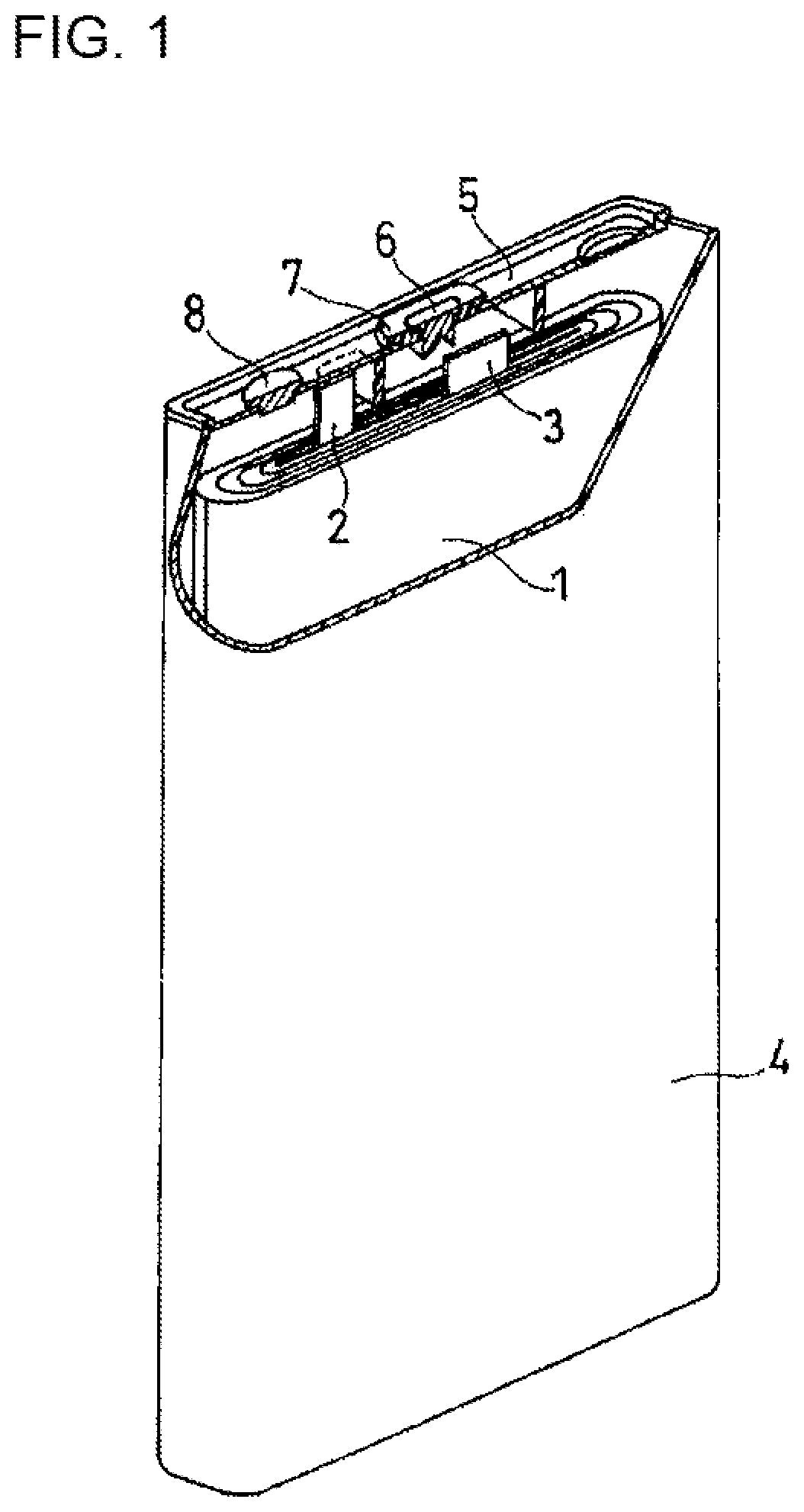Nonaqueous electrolyte secondary battery and electrolyte solution used in same
a non-aqueous electrolyte secondary battery and electrolyte solution technology, applied in the direction of electrochemical generators, electrical apparatus, organic electrolytes, etc., can solve the problem of increasing the impedance, and achieve the effect of remarkably lowering the initial impedance of non-aqueous electrolyte secondary batteries
- Summary
- Abstract
- Description
- Claims
- Application Information
AI Technical Summary
Benefits of technology
Problems solved by technology
Method used
Image
Examples
examples 4 to 6
[0084]Liquid electrolytes were prepared in the same manner as in Example 1, except that the amounts of lithium difluorophosphate and lithium fluorosulfonate were changed as shown in Table 1, and batteries A4 to A6 of Examples 4 to 6 were prepared and evaluated in the same manner as described above. Table 2 shows the relative values of the impedances of batteries A1, A4, and A5 when the impedance of battery A6 is set as 1.
TABLE 2LithiumLithiumDimethyldifluoro-fluoro-LFSILiPF6sulfatephosphatesulfonateImpedanceBattery(M)(M)(mass %)(mass %)(mass %)(SOC50%)A10.31.01110.92A40.31.011—0.96A50.31.01—10.98A60.31.01——1.00
examples 7
[0086]A battery A7 of Example 7 was prepared in the same manner as in Example 1, except that, in the preparation of the negative electrode. LSX was not used and graphite, carboxy methylcellulose, and styrene-butadiene rubber (SBR) were mixed in a mass ratio of 97.5:1:1.5 to prepare a negative electrode slurry, and evaluated in the same manner. Table 3 shows the relative impedance of Battery A7 when the impedance of Battery A1 is set as 1.
TABLE 3LFSILTFSILiPF6ImpedanceBattery(M)(M)(M)GraphiteLSX(SOC50%)A10.3—1.09731.00B4—0.31.09731.15A70.31.010001.30
[0087]The reason why the impedance of battery A7 is larger than that of battery A1 is considered to be that, when the negative electrode does not include LSX, the hybrid film formed on the surface of the negative electrode becomes thicker than when the negative electrode includes LSX. It is presumed that if the negative electrode contains LSX, new surfaces are formed due to expansion and contraction of LSX during charge and discharge, so ...
PUM
 Login to View More
Login to View More Abstract
Description
Claims
Application Information
 Login to View More
Login to View More - R&D
- Intellectual Property
- Life Sciences
- Materials
- Tech Scout
- Unparalleled Data Quality
- Higher Quality Content
- 60% Fewer Hallucinations
Browse by: Latest US Patents, China's latest patents, Technical Efficacy Thesaurus, Application Domain, Technology Topic, Popular Technical Reports.
© 2025 PatSnap. All rights reserved.Legal|Privacy policy|Modern Slavery Act Transparency Statement|Sitemap|About US| Contact US: help@patsnap.com

